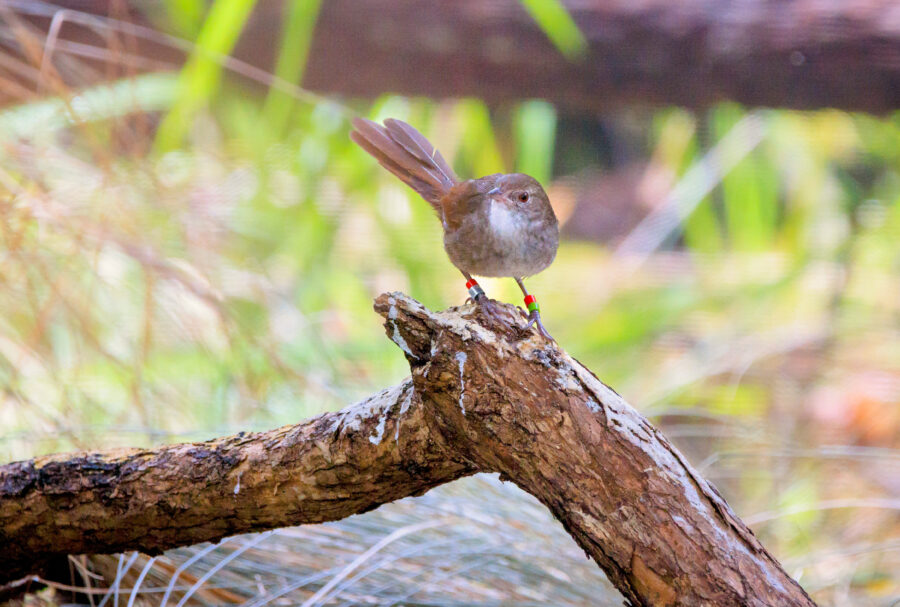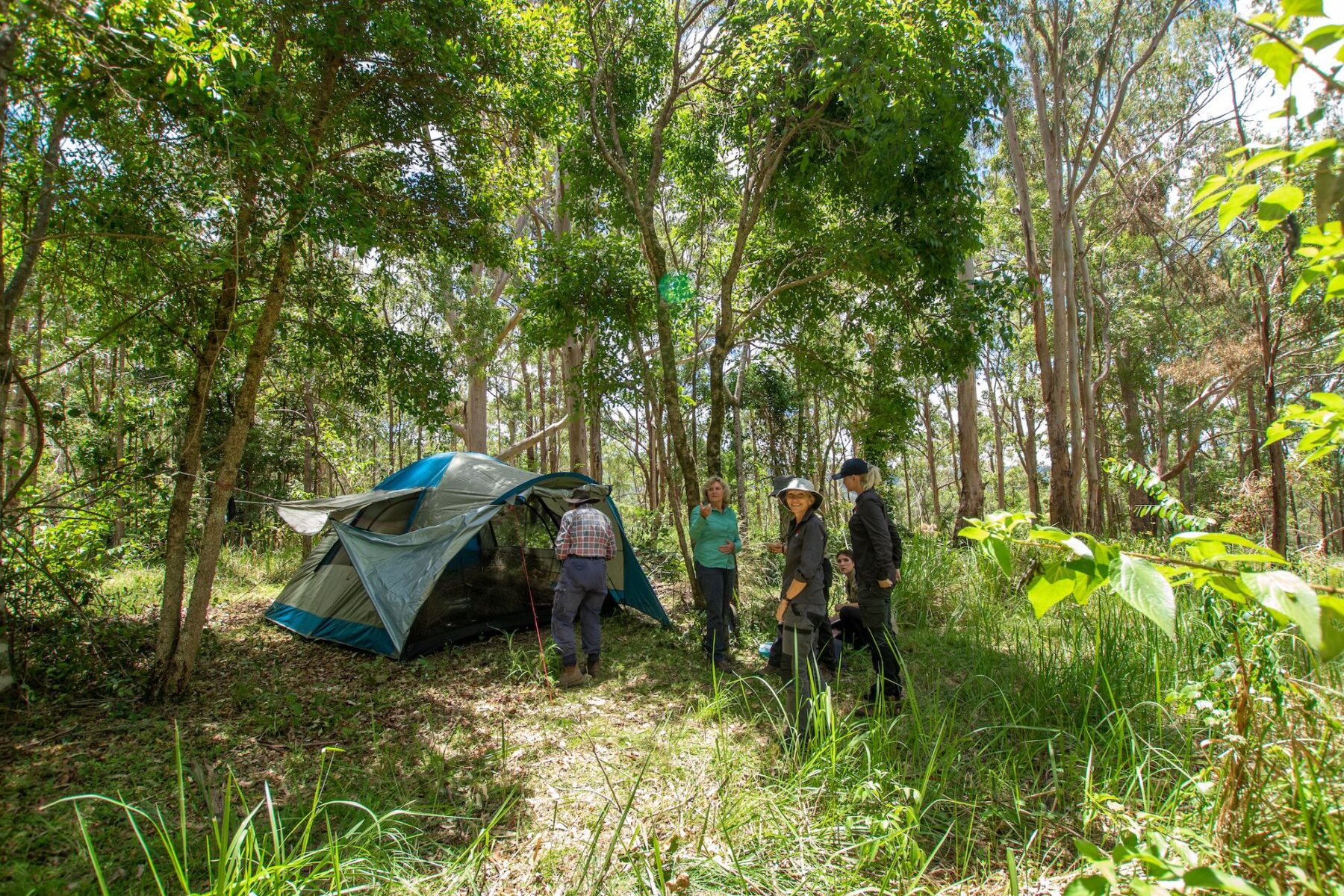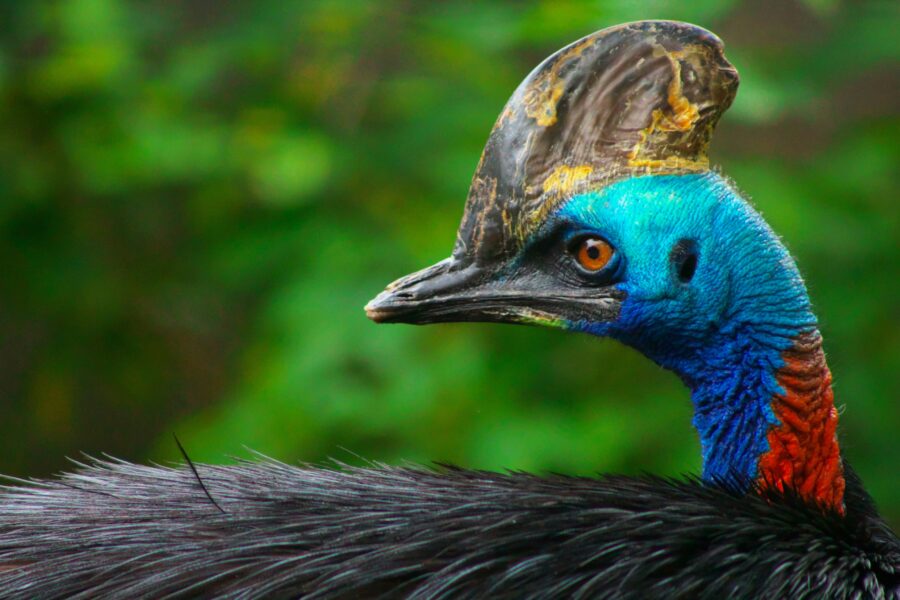Bringing back the eastern bristlebird

The eastern bristlebird is a small, ground-dwelling bird with cinnamon-brown plumage and a cute cleft tail that forages on insects and inhabits the dense, grassy understorey around open forest and heathlands along the east coast of Australia.
It may sound like a common bird, but the species is considered endangered by Commonwealth and state legislation, with only four populations left in the wild, amounting to less than 2500 birds.
The smallest and most critically endangered of these populations is found in northern NSW and only consists of an estimated 40 to 50 birds.
At its lowest point in the late 1980s and early 90s, the northern population consisted of only 15 birds, but long-term habitat restoration work and captive breeding programs are successfully bolstering eastern bristlebird numbers.
The eight recent releases directly result from these programs, bringing the number of birds released in the past year to 23.
The importance of diversity
Currumbin Wildlife Sanctuary in Queensland is home to a captive breeding program for eastern bristlebirds, which is creating a sustainable captive population to support the reintroduction of the birds into the wild and act as an insurance population against extinction.
Currumbin’s Avian Conservation Supervisor, Allison Beutel, says the birds were once a common sight in South East Queensland, eastern NSW and Victoria, but numbers have dropped by 80 per cent since the 1980s due to urban development, habitat loss, climate change and inappropriate fire burning regimes, according to Allison.
“In response to plummeting numbers, a captive breeding program was started at the David Fleay Wildlife Park in 2004 with the acquisition of two young chicks from a nest in the wild,” Allison says. “Those chicks turned out to be a male and a female and they started the program which was inherited by Currumbin in 2014.”
Currumbin received five birds from David Fleay Wildlife Park, but they were all offspring of the initial breeding pair, creating many challenges due to a lack of genetic diversity.
“We knew we had to grow the genetic diversity – and we knew that we needed to get those new genetics from the wild – but with such low numbers in the wild, you can’t go and collect adult birds,” Allison says. “The next best thing is to take eggs or chicks, and that way the pairs that are out in the wild can continue to re-clutch and it doesn’t have a significant impact on them.”
Birds were collected from a population in central NSW (the species’ stronghold with a population estimated at 1500 birds) with the help of a conservation detector dog – an English springer spaniel named Penny – and added to the breeding program to create a more robust population for future releases.
Conservation genetic experts were then brought in to analyse the birds and find the most ideal pairings.
“We want to maintain or improve genetics in our captive population as much as possible, but we also have a window of compatibility to work with,” says Allison.
You see, although eastern bristlebirds are small in stature, they’re big in personality: “When it comes to re-pairing around breeding season, we have to be quite particular with who we pair and match their personality traits,” Allison says. “Some birds, for whatever reason, simply don’t like each other.
“We have some very dominant females that we need strong males for. We also have some females that get a little bit upset when they hear their males replying to other females and vice versa – it’s almost like a little marital dispute goes on in the cage.
“Sometimes, the females simply don’t like their males anymore, and other times, we have a little bit of a bust-up between pairs – it’s like Days of Our Lives but for birds!”
How to make a home
Before offspring from the captive breeding program at Currumbin can be released into the wild, eastern bristlebird habitats must be restored, which is where the NSW Department of Climate Change, Energy, the Environment and Water (DCCEEW) comes in.
Through the Saving Our Species (SOS) program, DCCEEW works with private landholders to recreate eastern bristlebird habitat through weed control and canopy thinning, while the NSW National Parks and Wildlife Service (NPWS) performs fire management.
Senior Threatened Species Officer Kelly Roche says through SOS, DCCEEW now performs fire management over more than 200ha along the border Rangers National Park Estate each year and has done 130ha of weed and fire management on private lands.
“The response of the environment to the habitat management works has been very successful,” she says. “We’ve seen birds returning to areas they had previously abandoned due to weed pressures or overstorey encroachment.
“We’ll be looking to continue restoring and reconnecting fragmented areas and maintaining the gains that we’ve already made, and we’ll be continuing releasing offspring from the captive breeding program.”

Life in the wild
As captive numbers continue to grow steadily and more land becomes available for habitat restoration, eastern bristlebirds are being released into the northern population twice yearly.
During the release, the birds are set up for three days in a tent enclosure in the wild for a ‘soft release’, during which they can acclimate to the environment’s noises and scents.
“Right from the get-go, we’ve seen a lot of interactions from wild birds coming up to our birds, especially the females, as they acclimate,” says Allison. “This makes us think there must be quite a big bias for males in this wild population.
“During the October release, we had a wild male approach and he picked between two female siblings, visiting her every day during the three-day acclimation window. When we opened the tab on the fourth day, he was hanging around. He approached and escorted her out of the tent, and off they went together!”
According to DCCEEW, the release program is designed to continue for at least nine more years, or until numbers reach the levels that would have been seen in the late 1980s when there were about 70 territories of birds existing in wild populations of between 150 and 170 birds.
You can learn more about the captive breeding project on the Currumbin Wildlife Sanctuary website.



